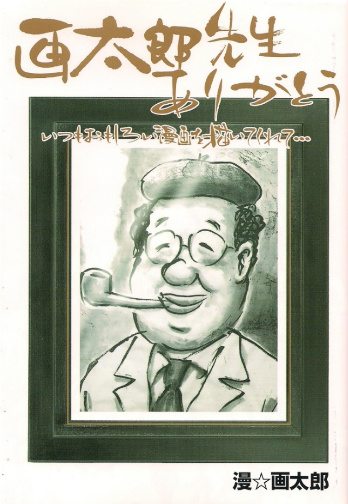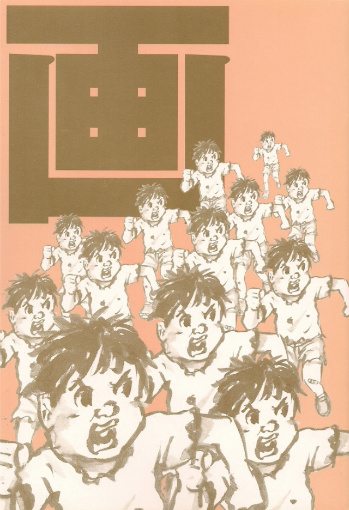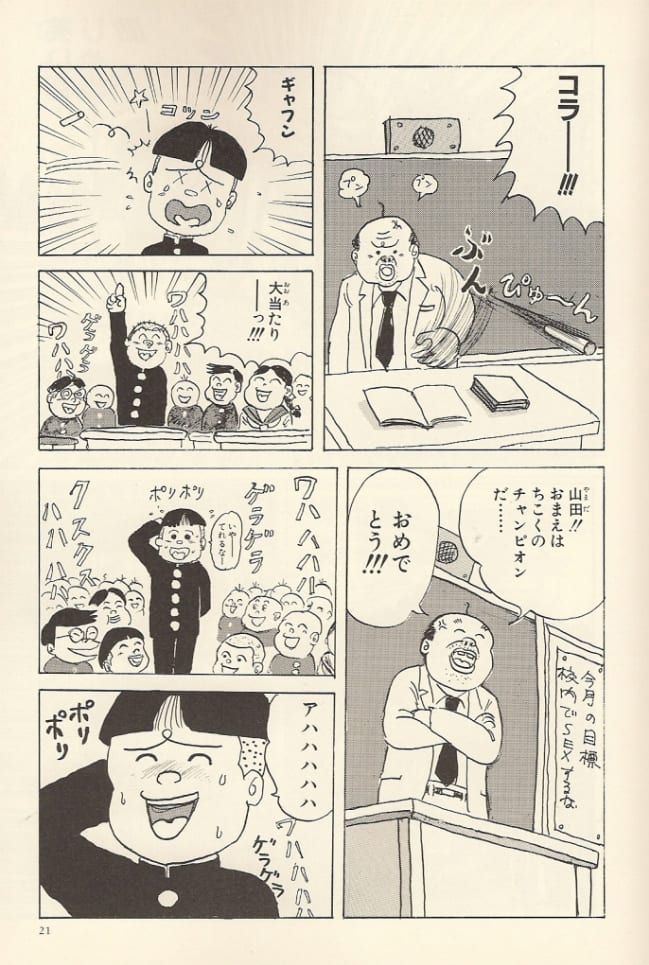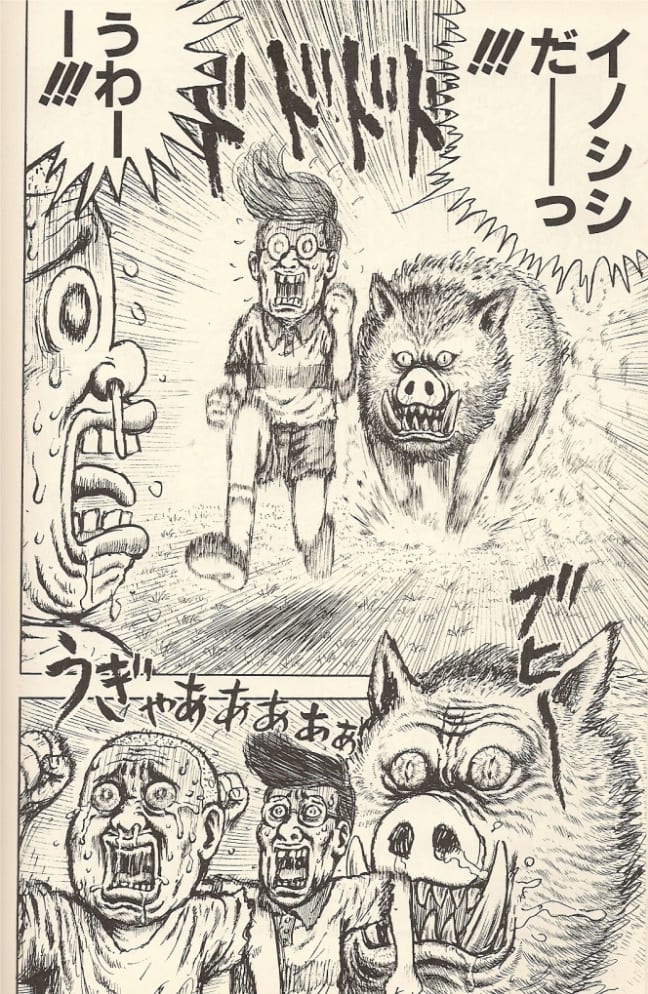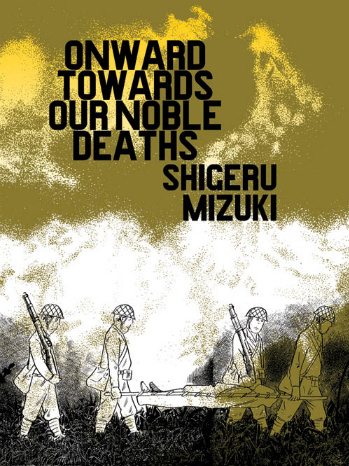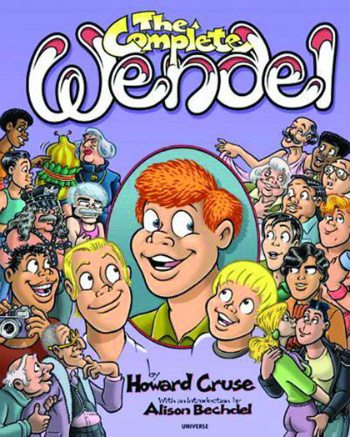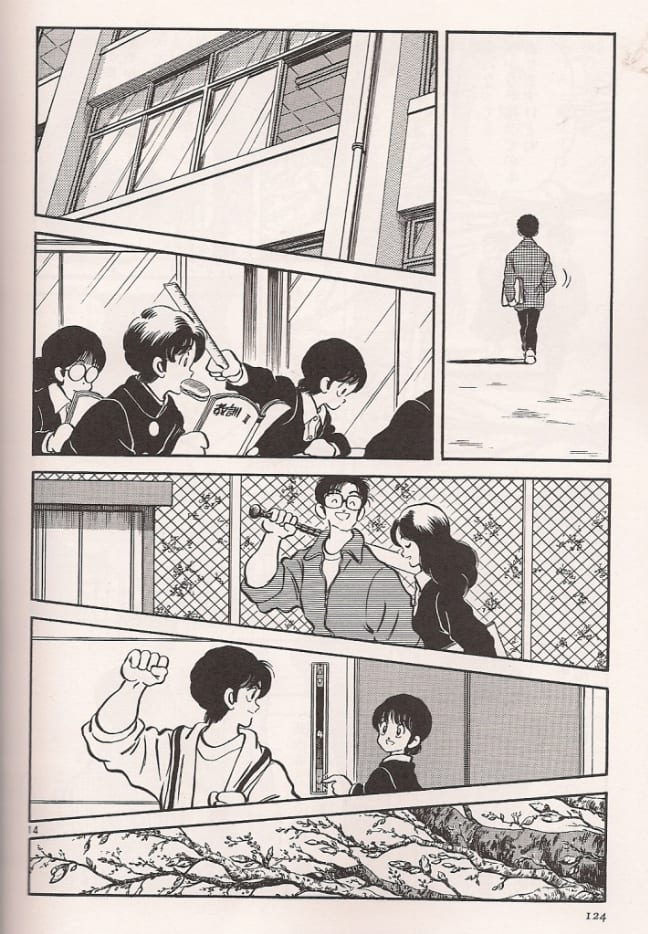 What you see to your left is the source of my power when it comes to selecting comics in a language I don't understand, which are anyway shrink wrapped to prevent greasy-fingered browsing by uncertain types. Such is reality at the Kinokuniya Bookstore in Manhattan, but little do they know that I require only a handful of delicious anpan buns and its accordant dosage of MILKPOWER to gaze directly through the bonds of commercial prudence and into the burning soul of untranslated manga. I didn't think; I just bought. Here's what I found:
What you see to your left is the source of my power when it comes to selecting comics in a language I don't understand, which are anyway shrink wrapped to prevent greasy-fingered browsing by uncertain types. Such is reality at the Kinokuniya Bookstore in Manhattan, but little do they know that I require only a handful of delicious anpan buns and its accordant dosage of MILKPOWER to gaze directly through the bonds of commercial prudence and into the burning soul of untranslated manga. I didn't think; I just bought. Here's what I found:
This is an apparent reissue of a 2000 short story collection by gag manga specialist 漫☆画太郎, who typically presents his pen name in English as "MAN☆GATARO," or the mock Western-aligned "Gatarō Man" (not to be confused with the beloved PS2 game Gitaroo Man, which is something entirely different). The book is titled 画太郎先生ありがとう いつもおもしろい漫画を描いてくれて…, which Google translates to the absolutely splendid Always fun to draw me a cartoon picture... Thank you, Mr Taro. The dust jacket suggests a valedictory presentation, but the truth is hidden underneath:
And, were you able to circumvent the clear prison in which the retail item nestled on the shelf, you might encounter a cartoon spread like this:
I hadn't realized at the time that I'd encountered Gatarō Man once before, in 2002's notorious Manga Hell issue of Viz's Pulp Magazine, an ill-fated early attempt to bring 'mature readers' manga to North America in the form of a curated anthology. Manga Hell was the final issue, in which various contributing writers detailed their own vision of the issue's theme - many topics were explored, including the sex comics of Osamu Tezuka and a wholesale reevaluation of writer Kazuo Koike as avatar of fevered comics madness, a corrective to the predominant and rather inaccurate framing of the man's work as properly respectable historical fiction and studied hi-gloss action. The whole shebang was dedicated to Yoshihiro Tatsumi, himself a good three years off from a considerably more 'quality' presentation as vintage alt-manga for connoisseurs via Adrian Tomine and Drawn & Quarterly with The Push Man and Other Stories.
Anyway, Tomohiro Machiyama opted to frame his entry as a series of capsule entries -- choice of kings, that -- honed in on untranslated madness that nonetheless managed to thrive in the mainstream of Japanese comics. Of Gatarō Man's Zooichi the Jungle Boy, he wrote that the artist "self-evaluates his own works as kusoman. That means 'shit comic.' Literally, his art, subjects, and everything are like trashy, super ugly, and scatological, like pre-school kid's scribbling.... But that didn't stop Shonen Jump, the largest circulating magazine in human history, from featuring this guy's outsider art." And indeed, Always fun to draw me a cartoon picture... Thank you, Mr Taro was published by Big Three manga publisher Shueisha as part of its Jump Comics Deluxe line of books; the artist had worked with the publisher since his professional debut in 1989, with several pieces showcased in Weekly Shōnen Jump, the big show, which at its Dragon Ball-fronted '90s height was easily the biggest comics-centric publication on planet Earth, touching circulation figures upwards of six million.
Needless to say, a talent of such caliber could not be kept away.
You are perhaps noticing some difference between the last two spreads. One of them places an infernally scratchy phantom against a Wolvertonian human grotesque, while the other pits a brushy broccoli creature against a young man barely filled from his dramatic outline. This summarizes the Gatarō Man aesthetic, which typically shifts from marky messiness to an extremely rich sort of caricatured realism, always for comedic effect, and sometimes for the purposes of spoofing. There's two stories in here featuring broccoli man, for instance, who functions as the archetypal malevolent gift-giver that loans a meek student and an old lady great strength, only to have them shot to death in the end by a police officer. The same police officer, actually. Also, the boy's gift -- a heart in a jar -- not only fills his body with shade and hatching but prompts him to rip off his clothes and run amok (he has wanted to buy sexy magazines but just couldn't); it really is basically the final chase in Observe and Report, but as a fundamentally mainstream comic.
Sometimes the break in visual style is even more pronounced. Another story starts out as typical kids' comics stuff, with a wacky late student getting bonked on the head:
And then transforms into this once Teacher decides to opt for corporal punishment:
This escalation of visual detail again matches the plot of the work -- and it can't be said enough that I had no trouble following the stories or 'getting' a remarkably large number of jokes despite being unable to read Japanese -- in that the boy and his teacher engage in a very Dragon Ball-type of fight, constantly upgrading their powers and switching to new forms until the teacher is some wrinkly octopus thing and the boy is a robot who gets an erection that's an ICBM which nukes the entire city, but then they become friends at the end!
Most of the book's stories trade off on boys' manga parody and the kind of scatological/penis-based violence humor pioneered in boys' comics by the likes of Tatsuhiko Yamagami; in this way, Gatarō Man is a participant in a tradition, yet his tradition -- gag comics, parody, silliness -- affords him a certain freedom to switch up his style that might be denied a 'story' artist, who would (at least on this popular a level) typically employ a horde of studio assistants to keep the visual quality consistent over the course of a long serial. I don't know if Gatarō Man uses assistants, but his look is anything but steady-going. It's the jester's freedom.
I probably prefer his looser, sketchy style the best; there's an acuity to even his scribbles that's really attractive.
Still, I suspect its the tactility of his heavier images that will hold the eye best. The rumples on this bus look Crumb-like to me, which raises the question of where Gatarō Man took his inspiration; I understand he's something of a recluse, or at least keen on cultivating an image of mystery about himself.
Regardless, what we have here is a zany survival horror story, something of a sequel to an early segment in the book wherein a student must stay after class to eat his food under the gaze of a stern teacher; the book insists it's a Dragon Ball side-story.
The children are left to fend for themselves in the wild, facing snakes, wolves, and larger, nastier creatures. In the end, of course, it was all an impossible ruse on the part of the hero boy's teacher to once again get him to eat his disgusting lunch, which the boy then decides he likes a lot!
The jokes here are fairly obvious -- that fat kid loses his clothes early and walks around with his dick out for the rest of the story -- but a bit deeper down there's a fascination with cruelty in Gatarō Man's work, at least from what I can see here, again without the benefit of comprehensible text to guide me. The pedagogical characters are always basically sinister, although the demands of these youth-targeted stories always sees them coming out on top, celebrated for their obvious abuses. The variations in visual style make these events especially funny, but maybe they also highlight the artificiality of the narratives, to suggest to any Slam Dunk-hungry kids that adults are a bit goofier than even comedy would lead you to believe. I don't know - to have my eyes pulled toward this art is surely a function of not getting the words, so it's only part of a comic I have, just as perceptions of artists change from greater historical context, or stories from varying art styles.
All I know for sure is that every story in this book ends with the main characters embracing in the nude, which is a sentiment that transcends all cultural, linguistic and physical boundaries, not to mention those of taste. I pray, as always, for English releases and Hell to come again to Earth.
***
PLEASE NOTE: What follows is not a series of capsule reviews but an annotated selection of items listed by Diamond Comic Distributors for release to comic book retailers in North America on the particular Wednesday, or, in the event of a holiday or occurrence necessitating the close of UPS in a manner that would impact deliveries, Thursday, identified in the column title above. Not every listed item will necessarily arrive at every comic book retailer, in that some items may be delayed and ordered quantities will vary. I have in all likelihood not read any of the comics listed below, in that they are not yet released as of the writing of this column, nor will I necessarily read or purchase every item identified; THIS WEEK IN COMICS! reflects only what I find to be potentially interesting.
***
SPOTLIGHT PICKS!
Onward Towards Our Noble Deaths: Speaking of Drawn & Quarterly's manga releases, here's the latest of those, the long-overdue English language debut of Shigeru Mizuki, yōkai creature manga specialist and big winner at Angoulême in 2007 for his NonNonBā (reactions varied). This is something a bit different, a World War II story based somewhat on the artist's own experiences (he lost his left arm in an air raid), concerning the plight of soldiers obliged to die in battle or face execution. I'm told a bit more contextual material than usual is provided, which should prove worthwhile. Preview; $24.95.
The Complete Wendel: Pretty much what you'd expect from the title - a 288-page compilation of underground veteran and Stuck Rubber Baby artist Howard Cruse's 1980s strips from The Advocate, chronicling the exploits of a bright-eyed gay man through times of struggle and change. Published by Rizzoli's Universe Books, foreword by Alison Bechdel; $24.95.
--
PLUS!
Battle Chasers Anthology: Oddly enough, I was just discussing this (in)famous, unfinished 1998-2001 Joe Madureira series at MoCCA last weekend; we were trying to figure out whether Nate Simpson's recent Nonplayer wasn't a little like this in approach. I felt it wasn't; Battle Chasers, for all the baggage it eventually picked up, wasn't so decompressed a series. If anything, at its best it was a genuinely inspired mix of J-RPG tropes with American action comic pacing, much like how (at that point) Madureira's art sought to reconcile J. Scott Campbell-style Image cheesecake stylings with a miscellaneous anime-look influence that weighed heavily on some genre comics of those late '90s dog days. None of this is to say that a new 340-page Image collection of all extant material is necessarily worth a hundred bucks, or that the work still doesn't eventually just run out of gas and stop mid-story, but there is a point in American pop comics history that Madureira arguably defines, and its implications are still being navigating today. Preview; $100.00.
Flash Gordon Comic Book Archives Vol. 3: And zipping right down to the marginal, here is a comprehensive Dark Horse hardcover collection of the 1969-70 Charlton version of this franchise. Art by Jeff Jones, Pat Boyette and others; $49.99.
The Mighty Thor by Walter Simonson Omnibus: Lots of everything this week. A quintet of softcovers (some of them issued more than once) have collected this material over the course of the '00s, but now Marvel has one master hardcover edition, 1192 pages, collecting the entirety of Simonson's 1983-87 run as writer (and often artist) of the Lee/Kirby creation. I hear there's a movie coming out; $125.00.
Elephantmen Cover Stories #1: Only the latest release from creator/writer/letterer Richard Starkings' anthropomorphics-among-future-humans Image series, here promising a five-page preview of an upcoming issue by originating artist José Ladrönn, currently of Alejandro Jodorowsky's Final Incal over in continental Europe. Note however that most of this 64-page special is production art, some of it relating to current Elephantmen contributor Boo Cook. Preview; $5.99.
Casanova: Gula #4 (of 4): Relatedly, this final Icon-published issue of full-color reprints from the Matt Fraction-fronted interdimensional espionage series will contain a bonus Gabriel Bá-drawn story leading into the publication of all-new material later this year; $3.99.
The Spirit: Angel Smerti: Also related! This is the Mark Shultz/David Hine-written incarnation of Will Eisner's creation, drawn by Elephantmen veteran Moritat; if you missed it, issues #1-7 are in here, although I can't seem to find any word on whether the various 'star artist' back-up stories will be included; $17.99.
Hellboy: Buster Oakley Gets His Wish: The one-off latest in a line of Mike Mignola-written projects for special guest artists, this time welcoming Kevin Nowlan and reinstating some of the outer space elements that peeked in on the series' earliest stories. Preview; $3.50.
Spongebob Comics #2: James Kochalka and R. Sikoryak are again involved in this comics incarnation of the television cartoon; $2.99.
Cross Game Vol. 3: Finally, Viz brings another (376-page) brick of Mitsuru Adachi's super-sweet 2005-10 baseball relationship manga. While I was at Kinokuniya, I also picked up a recent Adachi release, a 40th Anniversary book sampling his entire career over the course of 354 pages. Well, actually, it samples all of his longform creations, which is an important distinction since that eliminates the first eight years of his professional career from consideration; as a result, Adachi's visual style looks fully formed from the 'start,' with the 1978 debut of the baseball series Nine. Still, I suspect everyone involved knew what they were doing; there's hardly any sports action in this survey of a most-popular sports manga creator, with much emphasis placed on delicate, rhapsodic scenes of communication and transition (and probably crucially memorable bits of dialogue which, again, I cannot read). I particularly liked this sequence from the 1986-91 boxing/softball series Slow Step (right-to-left, remember):
Words are not so important; the vacillation between obviously photo-based images and cartoon drawings and near-abstraction is really lovely. Slow Step was a shōjo manga, as opposed to the shōnen of Cross Game (or the seinen of his 1992-97 Jinbē), which makes Adachi the opposite of an artist like Gatarō Man; his 'look' never changed at all, though the heart of it was infinitely applicable to seemingly any audience. At least for now we're getting a better picture; $14.99.


